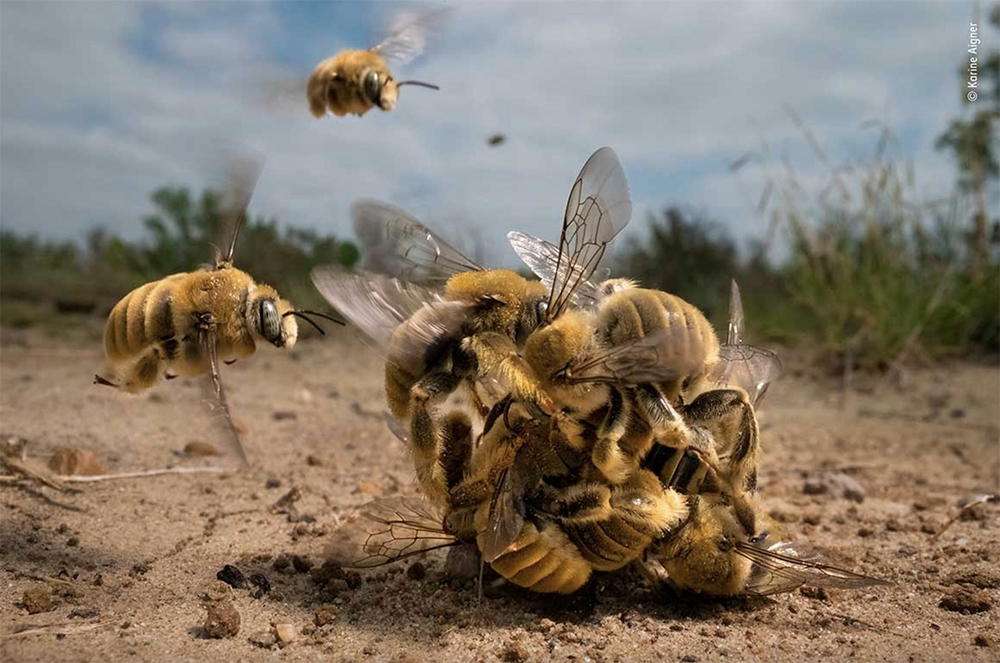Wildlife Photographer of the Year 2022
American photographer Karine Aigner has won the Grand Title in this year’s Wildlife Photographer of the Year Competition with a stunning image of a ball of cactus bees vying for a mate.
Every year in the deserts of southern USA, normally solitary cactus bees gather in huge numbers.
Patrolling areas of open ground, male bees are on the lookout for any chance to find a mate. As soon as a female emerges from its burrow in the ground, the males scramble to reach her as quickly as possible.
The fierce competition creates a buzzing ball of bees as the males swamp the solitary female, grappling with each other to secure their chance to father the next generation.
It is a dynamic image of one of these mating balls, titled The Big Buzz, that has won Karine Aigner the top prize in this year’s Wildlife Photographer of the Year Awards.
Showing a mass of male bees manically trying to reach the single female at its centre as still more bees come hurtling in, the image captures the intense drama unfolding just centimetres above the ground.
Rosamund ‘Roz’ Kidman Cox, Chair of the Wildlife Photographer of the Year Jury, says, ‘Wings whirring, incoming males home in on the ball of buzzing bees that is rolling straight into the picture.’
‘The sense of movement and intensity is shown at bee-level magnification and transforms what are little cactus bees into big competitors for a single female.’
A gregarious solitary bee
The typical image of bees is usually that of a large colony buzzing around a honeycomb, yet the vast majority of the 16,000 known bee species are actually solitary.
These solitary bees play a vital role in the pollination of plants, including many of those we eat. But the biology of many of these species remains poorly understood. For example, in the case of the cactus bee, it’s still not fully understood why it normally lives a life of solitude but then amasses in huge numbers in this mating event.
Knowing more about where, when and how these amazing creatures mate will help to protect them and in turn contribute to our fight to protect the planet against the impacts of humans and the rapidly changing climate.
Dr Doug Gurr, Director of the Museum, remarks, ‘Wildlife photographers offer us unforgettable glimpses into the lives of wild species, sharing unseen details, fascinating behaviours and front-line reporting on the climate and biodiversity crises.’
‘These images demonstrate their awe of and appreciation for the natural world and the urgent need to take action to protect it.’




